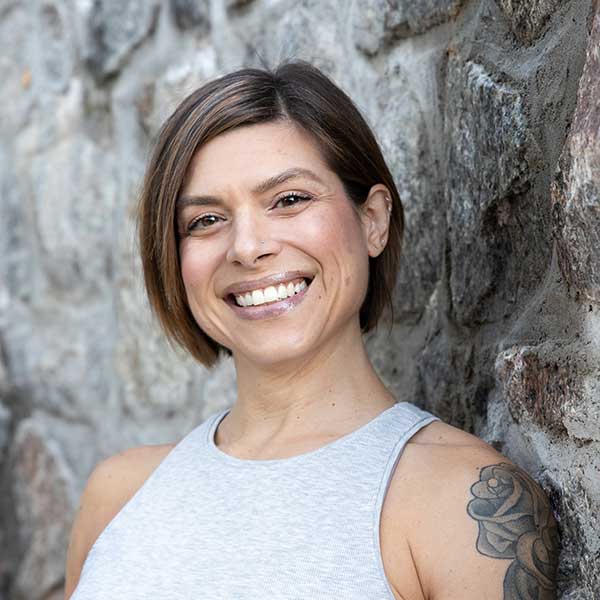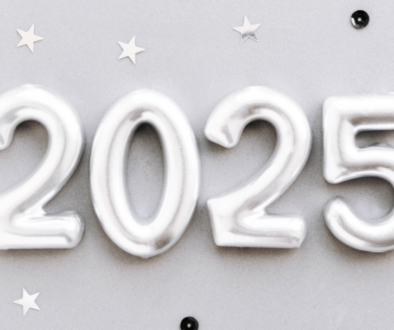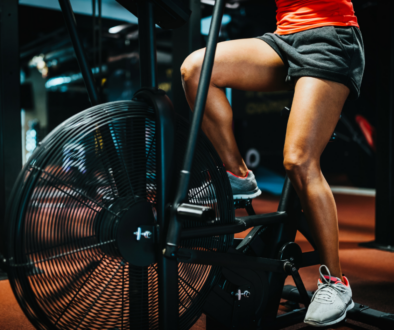Does Muscle Soreness Equal A Good Workout?
 Do you judge the effectiveness of your workout by how sore you are afterwards? Let’s set the record straight when it comes to muscle soreness or DOMS (delayed onset muscle soreness). Firstly, soreness is not the same as pain. If you have joint pain during an exercise or following a workout, that’s something to pay attention to. We used to think soreness was caused by the accumulation of lactic acid. Turns out that’s not correct. Lactic acid is a byproduct of working muscles during anaerobic exercise. But it’s also a fuel source for muscles that can’t store energy (like the heart and diaphragm). It gets used during the aerobic or recovery phases. By the time you’re finished your workout, there’s no more lactic acid.
Do you judge the effectiveness of your workout by how sore you are afterwards? Let’s set the record straight when it comes to muscle soreness or DOMS (delayed onset muscle soreness). Firstly, soreness is not the same as pain. If you have joint pain during an exercise or following a workout, that’s something to pay attention to. We used to think soreness was caused by the accumulation of lactic acid. Turns out that’s not correct. Lactic acid is a byproduct of working muscles during anaerobic exercise. But it’s also a fuel source for muscles that can’t store energy (like the heart and diaphragm). It gets used during the aerobic or recovery phases. By the time you’re finished your workout, there’s no more lactic acid.
What causes muscle soreness?
Doing something new or different is the surest way to DOMS. If you’re a newbie, it’s to difficult to avoid soreness because everything is new to you. And for seasoned fitness-lovers, trying a new workout or doing a new exercise will probably cause DOMS. Soreness can happen from even the slightest change. Like adjusting your stance, increasing your range of motion, elevating your heals, or holding the weight in a different way. It doesn’t even have to be exercise related. If you’ve done a home improvement project or yard work, you’ve likely felt muscle soreness, especially in your hands and forearms. Also, volume will cause soreness. You walk all the time, but if you walk a lot (like on vacation), your calves will be talking to you. Speaking of volume, higher rep ranges (like 15+) tend to lead to more soreness.
Lastly, eccentric (or the negative) movements generally cause more soreness. This is the part of the exercise when you’re resisting gravity and not letting the weight fall too fast or slowing down the lengthening of the band and not letting it snap back too quickly. Eccentric also refers to lowering in the squat or lunge, landing in a jump, and walking downhill, and any time you’re applying your brakes. We can’t skip the slow eccentric because this is the part of the exercise that’s so good for joints. It strengthens the connective tissue (tendons and ligaments). Over age 40, our connective tissue doesn’t grow and recover as fast as muscle and we can start experiencing things like tennis elbow, shoulder issues, knee pain, etc. We have to focus on the slow eccentric to strengthen and heal tendons and ligaments.
What’s the best way to recover from workouts and muscle soreness?
DOMS is most likely due to microtears in the muscles. I like to compare workouts to home renovation. Step one is demolition i.e. the workout itself. Step two is clean up i.e. inflammation. You might notice this as water-retention or swelling, soreness, and/or being a couple pounds heavier on the scale. No need to freak out, this is not bad. It’s during this inflammation response that muscles are rebuilt and repaired (and you get stronger and more resilient). This is why it’s best to avoid anti-inflammatory meds like Ibuprofen (Advil, Aleve) cold showers, ice baths, and cold plunges post-workout.
After demo and clean-up, you don’t yet have your dream kitchen! Now it’s time for step three, installation and making the space functional and beautiful. In this analogy, this is eating enough calories and protein. Eat high-protein daily, not just on training days because it’s in the days follow a hard workout that your body is repairing and rebuilding muscle tissue and needs it. Also important here is daily exercise between hard training sessions (walking, steady state cardio, Yoga, and/or Pilates), doing self-myofascial release to increase circulation (nutrients in, waste products out), hydrating, and keeping a consistent bed time (growth hormone is released only at the beginning of sleep and you’ll miss your window if you stay up later than usual).
What’s the verdict on muscles soreness?
If you’re so sore that you can’t walk or use your arms for 4 days, that’s counterproductive to the most important factor for your success: consistency! You need to be able to move daily.
If you’re always sore after workouts, it could mean you’re over-training or under-recovering or you just don’t have effective programming. If you’re doing something different every workout, you won’t reach your goals. There is no such thing as muscle confusion!
And if you’re never sore after workouts, it could mean you’ve plateaued and need a change: a new program, heavier weights, and/or a novel challenge for the body.
Basically is not okay to always be sore and it’s not okay to never be sore. As long as you’re reaching your goals, making progress, and feeling good inside and out, keep it up! If not, reach out and let’s talk!



